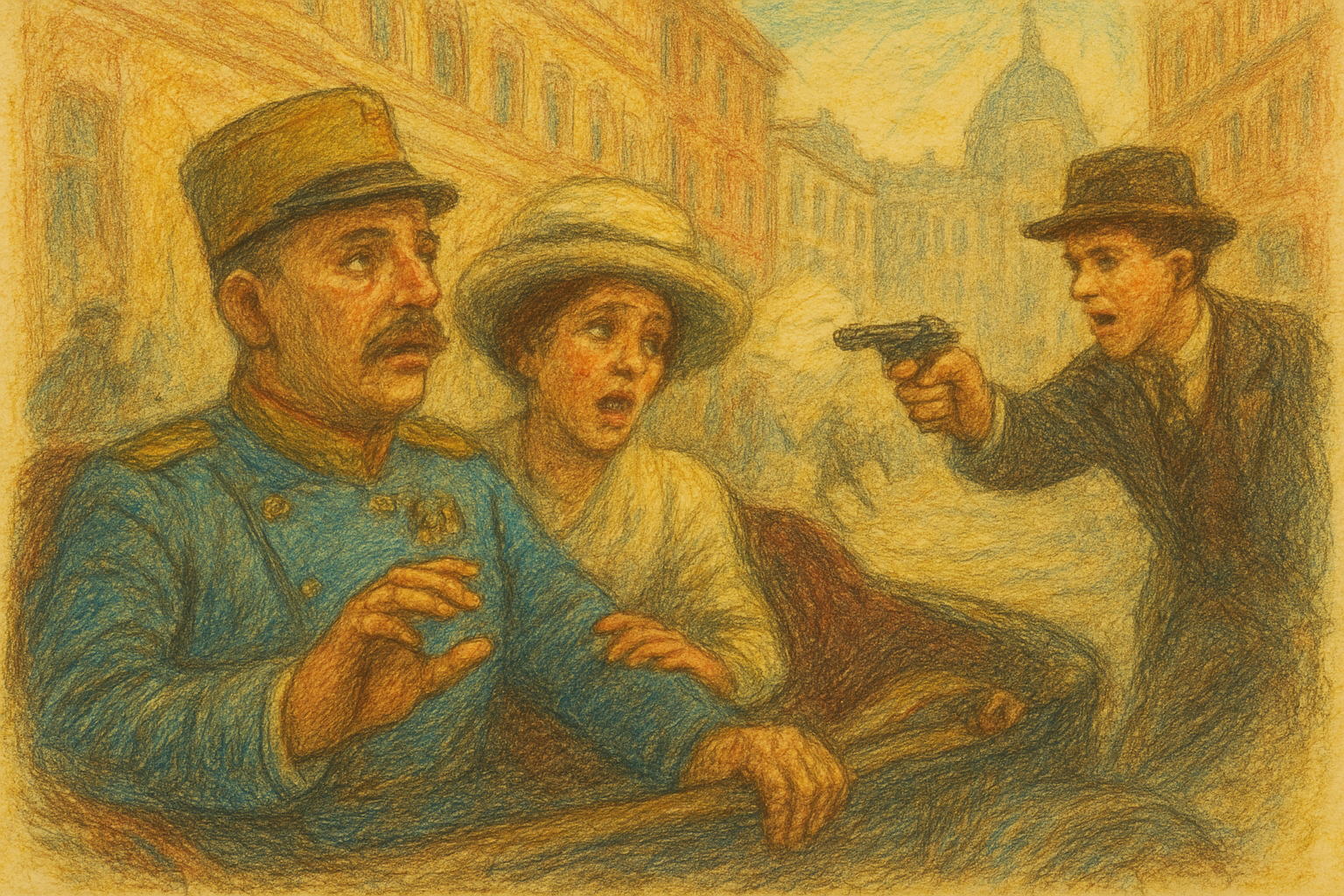The assassination of Archduke Franz Ferdinand in Sarajevo on June 28, 1914 by Gavrilo Princip touched off a sequence of diplomatic crises and mobilizations that transformed a regional crisis in the Balkans into a general European war, exposing how alliances, imperial rivalries, militarization, and nationalist tensions had created a precarious balance that could be toppled by a single violent event. Longstanding friction in the Ottoman-controlled Balkans, competing ambitions among the Austro-Hungarian, Russian, German, French, and British states, and a web of secret and public treaties had produced a continent primed for escalation; Austria-Hungary's swift decision to hold Serbia accountable, and Germany's assurance of support, encouraged a hardened stance that made localized retaliation likely to provoke broader intervention.
Once Austria-Hungary issued its ultimatum to Serbia and war declarations followed in July 1914, mobilization timetables, pre-existing war plans, and obligations under the alliance system drove a rapid spread of conflict: Russia moved to protect Serbia, Germany declared war on Russia and its ally France, and the German invasion of neutral Belgium brought Britain into the war, producing two opposing coalitions—Central Powers and Allies—embroiled by late summer across multiple fronts. The German Schlieffen Plan, intended as a swift knockout of France through Belgium, failed to deliver a quick victory and by the end of 1914 both sides on the Western Front had settled into a deadly stalemate characterized by trenches, barbed wire, and attritional offensives that transformed military practice and devastated landscapes and societies.
Technological and tactical developments magnified the destructiveness of the conflict. Machine guns, heavy artillery, rapid-firing field guns, poison gas, improved explosives, and the first widespread use of tanks and aircraft produced direct battlefield lethality and high casualty rates, while industrialized logistics and total war mobilization involved civilian economies and societies in sustained, large-scale slaughter and deprivation. The combination of new weaponry and entrenched operational patterns produced battles—Verdun, the Somme, Passchendaele—where gains were measured in yards and human costs ran into the hundreds of thousands, foreshadowing modern mass-industrialized warfare and producing casualty totals that dwarfed previous conflicts.
World War I's human toll and social consequences were staggering and multi-layered: millions of soldiers died from wounds and disease, civilian deaths mounted from famine, displacement, and war-related privation, and a concomitant influenza pandemic compounded mortality and suffering across combatant and neutral countries. The conflict also produced profound political upheavals—revolutions in Russia, the collapse of empires in Austria-Hungary, Germany, and the Ottoman lands, and redrawn borders across central and eastern Europe—that remade nation-states and created unsettled new polities while generating grievances that would mark the interwar years.
Economically and diplomatically the war reoriented global power. Massive wartime expenditures and debts, the transfer of economic production to military purposes, and the shifting balance of colonial and financial influence elevated the United States as an emergent world power while seriously weakening many European economies and imperial centers; the Paris settlement and the Treaty of Versailles attempted to reorder Europe but imposed burdens and territorial revisions that historians identify as contributing factors to later instability and the rise of revisionist, authoritarian movements in the 1920s and 1930s. The League of Nations embodied hopes for cooperative peace but lacked enforcement capacity and consensus among major powers, limiting its ability to prevent renewed aggression.
Lastly, the legacy of 1914–1918 reaches beyond geopolitics into memory, culture, and international law: the scale of death and destruction reshaped literature, art, and public commemoration; it prompted early efforts at war crimes accountability and international norms; and it set political and ideological conditions—national traumas, economic distress, and unresolved territorial disputes—that helped lay the groundwork for subsequent conflicts and the emergence of totalitarian regimes in Europe. The assassination in Sarajevo remains both a proximate trigger and a symbol of an age in which modernity's technological power combined with brittle diplomacy, producing a conflict that irrevocably altered borders, economies, and societies across the globe.
